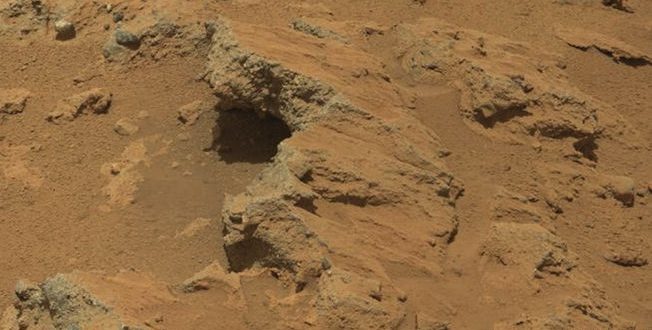Stanford University scientists have worked with colleagues at the US National Aeronautics and Space Administration (NASA) to develop a form of concrete that humans could produce on Mars or the moon.
NASA would like to send humans to Mars by 2030. Elon Musk, the CEO of SpaceX, says his private launch company could do it as early as 2024. But if humans actually do reach Mars, or even establish settlements on the moon, they would need thousands of tons of concrete to survive. That’s because both Mars and the moon are bombarded constantly with both lethal radiation and micrometeorites that would quickly punch holes into any ordinary structure.
Since it’s impossible to ship tons of cement from Earth to Mars, the best bet is for humans to start making it when they arrive. The problem is that making Earth-style concrete requires tremendous amounts of heat and energy, because you have to cook limestone to create the binding agent that holds concrete together. For the first human outposts on Mars, energy will be in very short supply.
To solve that problem, David Loftus at NASA’s Ames Research Center reached out to Michael Lepech, an associate professor of civil and environmental engineering at Stanford School of Engineering. Lepech, who is also a senior fellow at Stanford Woods Institute for the Environment, focuses on increasing environmental sustainability in construction, including ways to reduce the energy used in making concrete.
Together, the researchers have used animal protein to make a promising form of concrete that could solve problems on Mars as well as Earth.
“I never expected to be working with NASA,” Lepech recalls. “My research focuses on sustainable civil engineering and building systems – recycling heavy materials, minimizing waste. The folks at Ames came and said they had a big problem with materials management in space that might be super interesting to me. And they were right. What interests me the most is how we could use this to reduce waste on Earth.”
Indeed, the production of concrete accounts for 5% of all human-generated carbon emissions – a significant share. It’s the binding agent – the boiled limestone – that accounts for much of that.
In search for a less energy-intensive alternative, Loftus and Lepech turned to biology. Living organisms use proteins to make things as tough as shells, bones and teeth, so the researchers began working on a concrete bound together with a protein from bovine blood. The protein is a fairly cheap by-product of slaughterhouses, and it is known to become very gluey when mixed with soil.
To replicate the conditions on Mars and the moon, Lepech has combined the protein with simulated extraterrestrial soils that are similar to what’s on Mars and the moon. And because Mars has much lower gravity than Earth – bad for cement mixing – the researchers did their mixing with a vacuum technology that is used to make the composite materials in products such as boat hulls.
Sure enough, the first batch was as strong as the concrete used for sidewalks and patios – a good start. It also held up well to a simulated bombardment of micrometeorites, which the researchers replicated by taking the material to the Ames Vertical Gun Range and blasting it with high-speed gas particles.
For the purposes of making concrete on Mars, the idea is to create biological “factories” of organisms that are genetically engineered to produce the protein binder. It’s the same way that biotech companies use genetically engineered bacteria to make synthetic hormones. The feedstock for those organisms would come from the settlement’s recycled organic waste.
Lepech says that bio-concrete isn’t yet ready for buildings and roads on Earth – but that it could be.
In a follow-up paper on terrestrial applications, he and his colleagues found that heavy rain will degrade the new concrete over a period of years.
However, the researchers say there are many opportunities to improve the durability and efficiency, in part by tweaking the proteins as well as by becoming more efficient in production. One of the big advantages of bio-based concrete is that, unlike in regular concrete, the binding proteins can be recycled time after time. Over years, that can save a lot of energy.
“Right now, we’re using a little bit more energy per cubic meter of concrete,” Lepech says. “But that’s in part because we’re doing this on a small scale. We’re at the start of a very long road.”
Agencies/Canadajournal
 Canada Journal – News of the World Articles and videos to bring you the biggest Canadian news stories from across the country every day
Canada Journal – News of the World Articles and videos to bring you the biggest Canadian news stories from across the country every day



